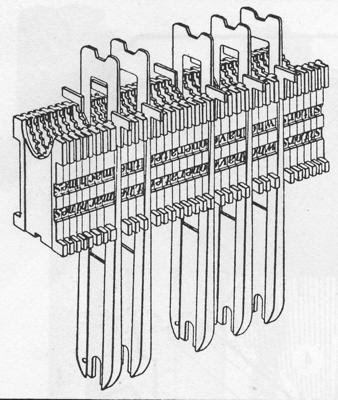
Ottmar Mergenthaler, born in Baden-Württemberg, Germany, in 1854. He made an impressive contribution to the story of printing, and enabled the Sunday Times to reach its unfeasibly large volume and weigh down the paper sacks of diminutive delivery people everywhere.
Here’s what he invented:

Now, I’ve picked over the ancient business of typesetting, with two cases of type [the upper case and the lower case, if you recall] and a composing stick. Well the compositors who handled these crude tools could set lines of type at a fair lick, even so, no newspapers ran to more than eight pages. Until Mr Megenthaler came along with linotype.
Basically here was a machine that set lines of type as fast as you could type a line. So papers grew in content and, to the abject disappointment of paper-boys and paper-girls everywhere, bulk.
My brother-in-law had one and I remember using it to set a line of type, or slug as it was known, of my name. The keyboard was not of a QWERTY layout,

You punched the keys and all hell broke loose. Little brass matrices,

tinkled down shoots into a line where, when a whole line was assembled wedges were driven up between the words

to justify the text, then a hefty lever shot them over to be confronted by hot lead from which the line of type was cast.
So rather than plucking plucky characters from the lower case, or indeed the upper case, Mr Mergenthaler’s machine used hot-metal. Behind this machine was a bubbling pot of molten lead. So there was a wonderful sound of crashes and clunks as lines of type-matrices were shuttered along to be cast and the tinkling of the brass tumbling down and back into the racks. Then there was the smell and warmth of hot metal, coupled with an ever-present twang of turpentine and printing ink. A heady cocktail indeed.
more information on linotype
No comments:
Post a Comment